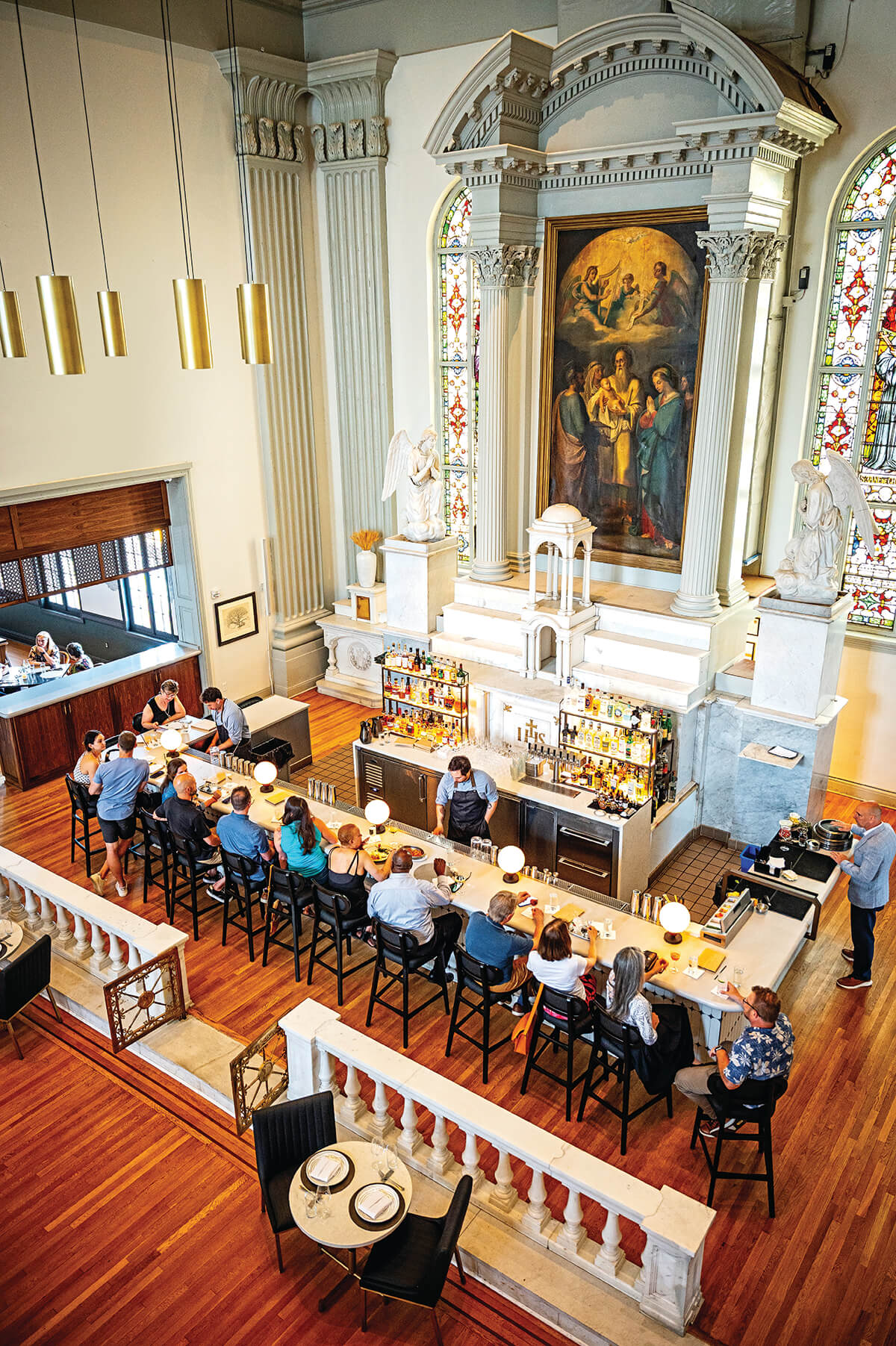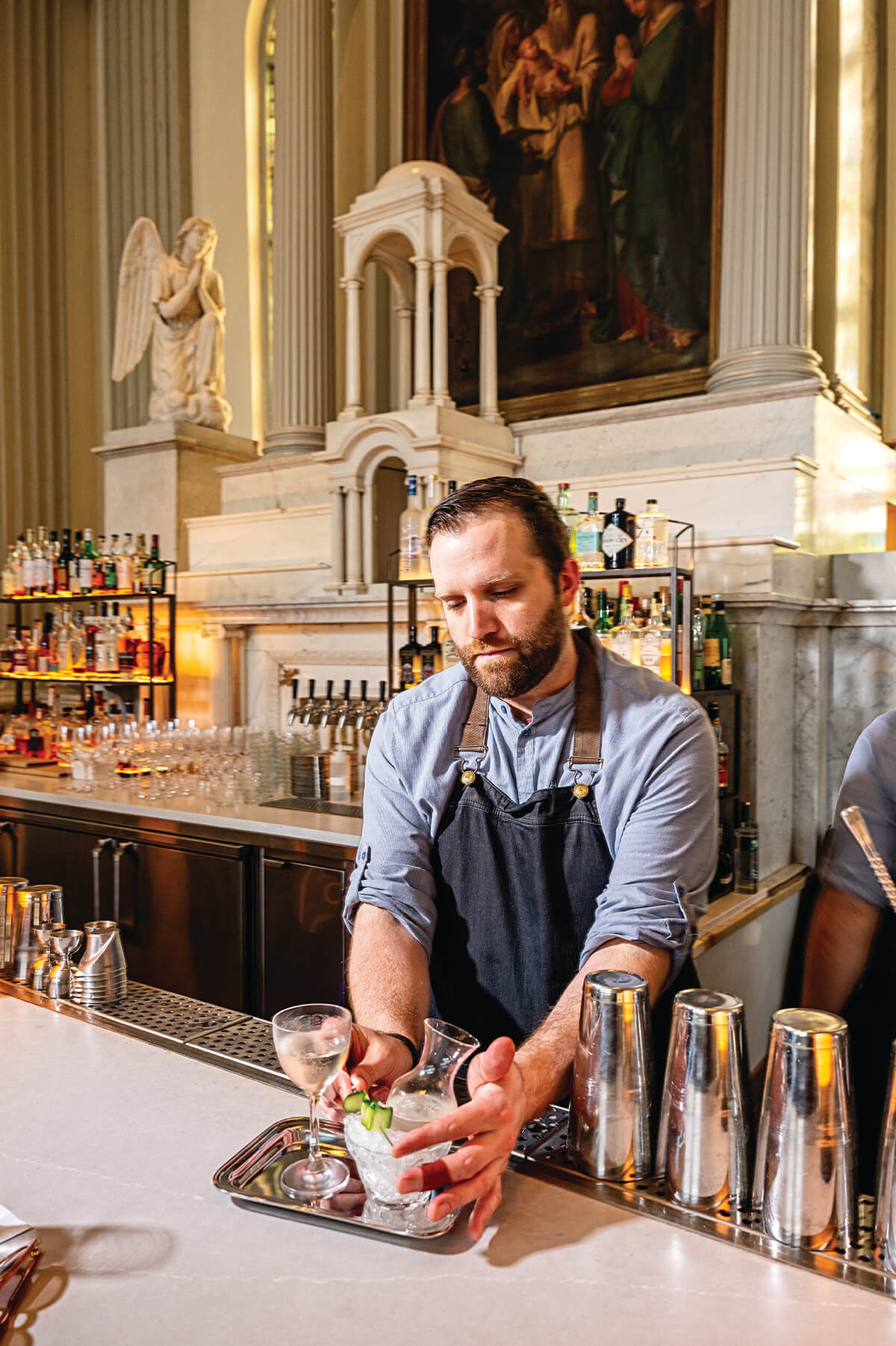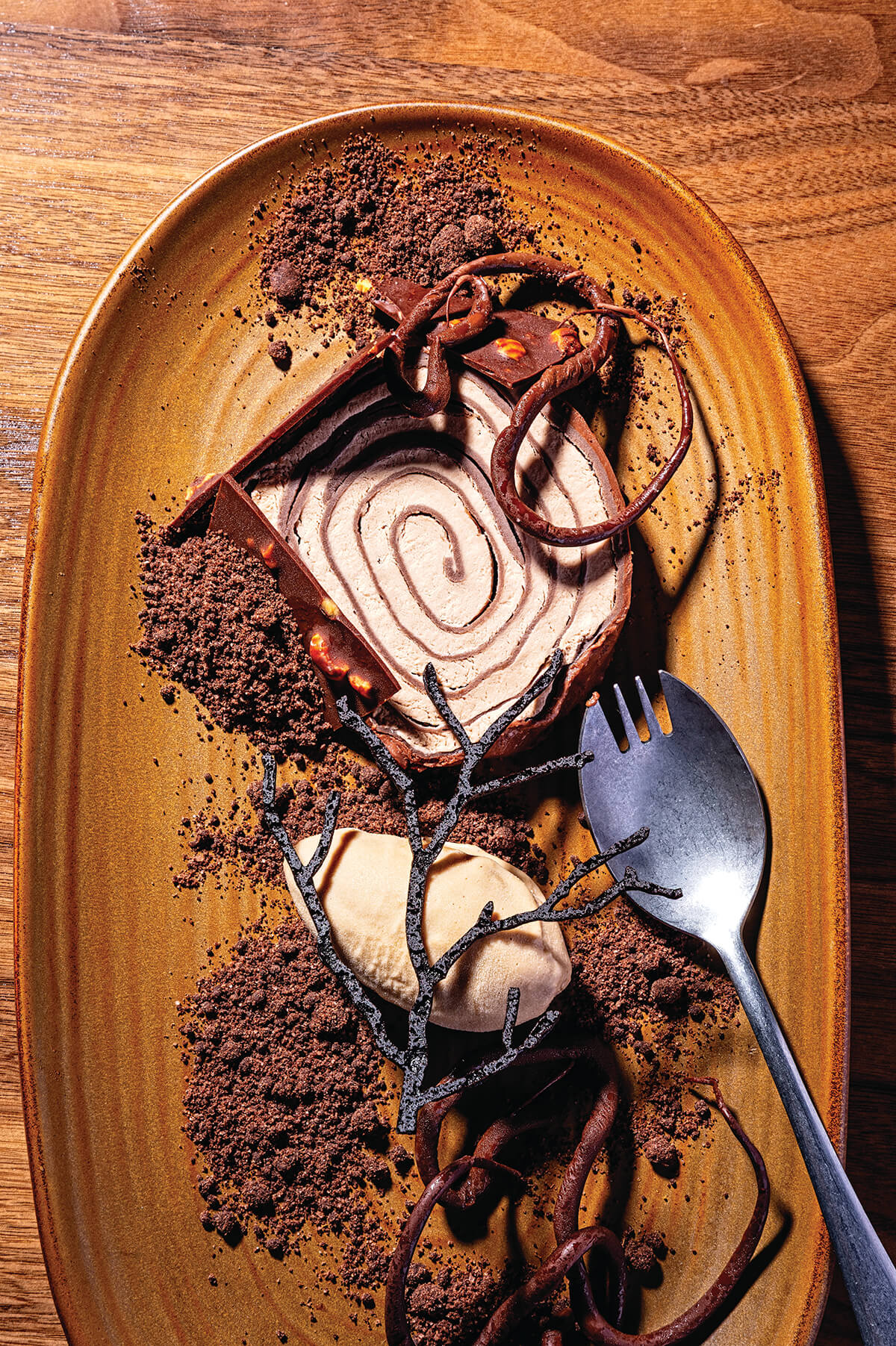Food & Drink
Review: Wye Oak Tavern, Housed in an Old Church in Frederick, is Divine
The Voltaggio brothers transform a sacred space in their hometown into a modern American restaurant.

On a sunny Easter day, people in their Sunday best sit at an altar, with its richly colored stained glass, white marble angels, and Italian oil painting of Mary and Joseph presenting young Jesus to St. Simeon. Beneath the cathedral ceiling, with its pipe organ on the top floor and flickering candelabras on the first, everyone is gathered for a kind of kinship.
But this is dinner service, not a church service, inside Frederick’s Wye Oak Tavern, a deconsecrated church converted into a modern American tavern from brothers Bryan and Michael Voltaggio. The church was once part of the Visitation Academy, a former convent and Catholic girls’ school now transformed into the Visitation Hotel Frederick, which opened last December.
Given that sharing, celebration, and community are at the heart of dining, it’s an apt metamorphosis for the 1852 historic church that has not been a place of prayer since 2016. The church theme décor is well-executed without being overwrought—the altar is now a well-stocked bar with a top-tier list of spirits including a selection of creative martinis (the aptly named Garden martini with its vegetal St. George Basil Eau de Vie Brandy was a standout); the nave is now a striking dining room with teal textiles and original stained glass by noted German craftsman Franz Mayer.
In the adjacent dining room, forest-green walls and an almost ghostly arboreal wallpaper are meant to invoke the restaurant’s namesake—at nearly 500 years, the Wye Oak in Talbot County was once the oldest white oak tree in the nation until it was felled by a summer storm in 2002.


The Voltaggios are, of course, Frederick’s celebrity chef brothers, who became household names after competing on Bravo’s Top Chef. Bryan famously came in second place to his younger brother on the cooking competition. With restaurants on both coasts, this is their fourth spot together, the first in their hometown—and their most exciting project to date.
Michael says that while they initially pursued their own projects, they’ve finally hit their stride as a team. “I drive a lot of the creative ideas and Bryan, who has an unrivaled work ethic and is one of the best technicians I’ve ever seen, brings them to life.”
As with many of their projects, the brothers’ bent is toward sourcing ingredients that are as sustainable, organic, and regionally rooted as possible. But unlike past projects, Bryan says, “We are less of a multi-course, big-commitment, celebratory experience and more of an everyday restaurant.” Everyday maybe, but hardly ordinary.
Wye Oak focuses on steaks—be it a filet mignon, a New York strip, a 45-day aged Roseda rib-eye, or a signature slow-roasted prime rib encrusted with garlic and mayonnaise and served with a lofty cheddar popover. (The protein is familiar territory, thanks to their Voltaggio Brothers’ Steakhouse at MGM National Harbor.) The meat is enlivened with a slew of creative sauces, like the pit-beef-inspired Tiger Sauce and a selection of steakhouse-style sides that are stars in their own right (the spiced sweet potatoes are among them).

As we’ve come to expect from the Voltaggios, the food is imbued with a boundless sense of playfulness—but never at the sacrifice of taste. That spirit of friskiness and fun is most evident in the appetizers, which arrive with unexpected elements that push the palate—and the imagination.
The smoked beet pastrami—sliced, pastrami-spiced beets, doused with Thousand Island dressing, and lacy squiggles of funnel cake—imparts the slightly sweet and tangy flavors of a Reuben. A fish and chips special features beer-battered puffer fish tails sourced from the Chesapeake, and coddies get coated in crushed Saltines before being fried, then arrive speared on popsicle sticks alongside a cauliflower tartar and mustardy giardiniera garnish to complete the flavor profile.
My favorite appetizer was the shrimp and grits cocktail, featuring four plump Gulf poached shrimp dusted in Old Bay and served alongside a side of shrimp toast made with grits and shrimp mousse. A spicy green cocktail sauce, made with tomatillos and green tomatoes and spiked with horseradish and cracked pepper, provides delicious dipping opportunities for both preparations.
As for the entrees, there’s plenty to accommodate non-steak-eaters, like a swordfish piccata, a clever riff on chicken piccata and a nod to the Voltaggios’ Italian roots. The brown butter, lemon, sage, and caper sauce hits all the right notes: nutty, acidic, sweet, and salty.
Several weeks later, another visit yielded new discoveries, like a refreshing fluke crudo appetizer dotted with blood orange sections, showered with benne seeds, and served with salt and vinegar sweet potato chips for mopping; and a crisp-edged smashburger.
Desserts are also worthy of consideration. The Wye Oak Cake—a sort of tree with log-shaped chocolate mousse cake and chocolate bark that fans out like branches—was an edible work of art, and an apple dumpling, inspired by the annual Apple Dumpling Day tradition at the former all-girls’ school, recalls the cinnamon toast of childhood.

On both visits, service was calm and confident. Our table servers made excellent suggestions, ably answering our questions. (One briefly looked alarmed when we asked, “Isn’t puffer fish toxic?” But after consulting the chef—or Wikipedia—she was quick to reply that the variety from the Bay are safe.)
Wye Oak Tavern is a fitting homage to an important piece of Maryland history. In fact, the State Forest Service still grows seedlings from the ancient oak to preserve its DNA.
Like its namesake, my guess is that the tavern will be here for many years to come